Scheduled monuments in Fife
A scheduled monument in Scotland is a nationally important archaeological site or monument which is given legal protection by being placed on a list (or "schedule") maintained by Historic Environment Scotland. The aim of scheduling is to preserve the country's most significant sites and monuments as far as possible in the form in which they have been inherited.[1]

The process of scheduling is governed by the Ancient Monuments and Archaeological Areas Act 1979, which aims "to make provision for the investigation, preservation and recording of matters of archaeological or historical interest". The term "scheduled monument" can apply to the whole range of archaeological sites which have been deliberately constructed by human activity but are not always visible above ground. They range from prehistoric standing stones and burial sites, through Roman remains and medieval structures such as castles and monasteries, to later structures such as industrial sites and buildings constructed for the World Wars. Some buildings or structures which were both scheduled and listed have had their listing designations removed to reduce the duplication.
In 2017 there were 8238 scheduled monuments in Scotland.
Notable Scheduled Monuments in Fife
| Name | Location | Description | Ref No | Image |
|---|---|---|---|---|
| Norman's Law hillfort | Dunbog | Remains of iron age hill fort | SM814 |  |
| MacDuff's Castle | Wemyss | Ruined 14th-century castle, dovecote and caves | SM817 |  |
| Abdie Old Kirk | Abdie | Roofless ruin consecrated in 1242 | SM825 | 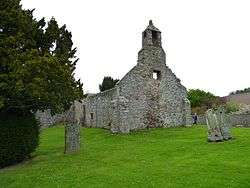 |
| Balmerino Abbey | Balmerino | Ruined 1227 Cistercian abbey | SM827 | 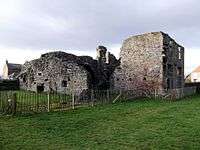 |
| Lindores Abbey | Newburgh | Remains of 12th-century Tironensian abbey | SM836 | 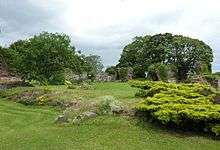 |
| Ardross Castle | Elie | Remains of 15th-century square tower | SM841 | 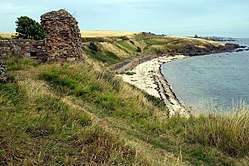 |
| Ballinbreich Castle | Flisk | Ruined major courtyard castle. | SM844 |  |
| Collairnie Castle | Dunbog | Ruined L-plan tower-house | SM847 | 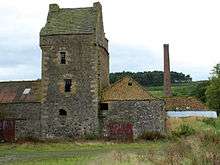 |
| Creich Castle | Creich | Ruined L-plan tower-house | SM848 |  |
| Denmylne Castle | Newburgh | Ruined tower house | SM852 | 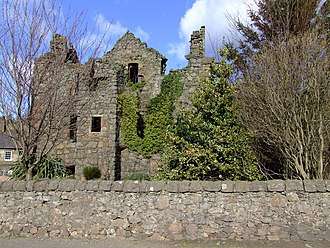 |
| Falkland Palace | Falkland | Royal palace (excluding South Range and stables) | SM854 | 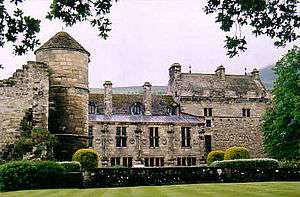 |
| Newark castle | St Monance | Ruined castle and dovecote | SM866 | 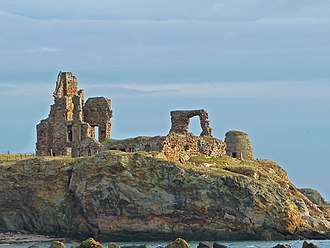 |
| Culross Palace | Culross | 15th/16th-century merchant's house | SM5288 | 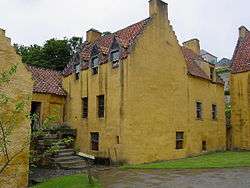 |
| Balgonie Castle | Markinch | Courtyard buildings surrounding unscheduled tower-house | SM6411 | 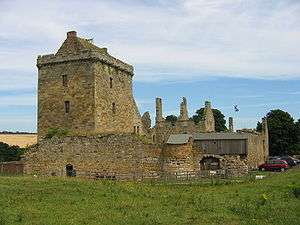 |
| Culross Abbey | Culross | Remains of medieval abbey | SM13334 |  |
| Aberdour Castle | Aberdour | Substantial ruins of castle and dovecot | SM90002 | 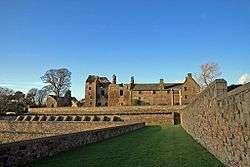 |
| Dunfermline Abbey | Dunfermline | Ruined abbey buildings, including the ruined palace, but excluding the abbey church | SM90116 | |
| Ravenscraig Castle | Kirkcaldy | Remains of promontary castle | SM90244 | 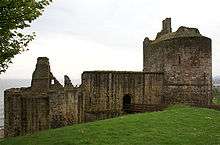 |
| St Andrews Castle | St Andrews | Ruined medieval and Renaissance style castle | SM90259 | |
References
- "What is scheduling?". Historic Environment Scotland. Retrieved 2 September 2017.